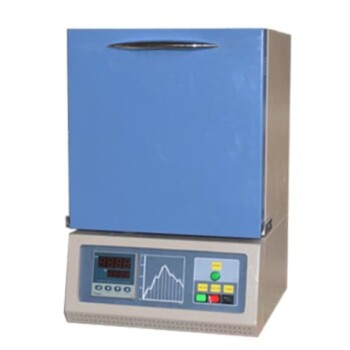In the vacuum of space, heat is transferred exclusively through a process called thermal radiation. Unlike other forms of heat transfer that require physical contact or a medium like air or water, radiation moves energy across empty space using electromagnetic waves. This is the same fundamental mechanism that allows the Sun's warmth to travel millions of miles to reach Earth.
The core principle to understand is that all matter with a temperature above absolute zero constantly emits energy. In a vacuum, this emission of electromagnetic waves, or thermal radiation, is the only possible way for heat to move from one object to another.

The Three Modes of Heat Transfer
To grasp why radiation is unique, it's helpful to quickly review all three ways heat can move.
Conduction: Transfer by Touch
Conduction is the transfer of heat through direct physical contact. When you touch a hot stovetop, the heat transfers directly to your hand.
This process relies on vibrating atoms bumping into their neighbors and transferring kinetic energy. It cannot happen without matter.
Convection: Transfer by Flow
Convection is the transfer of heat through the movement of fluids (liquids or gases). A furnace heats air, and that hot air circulates through a room to warm it.
This process requires a medium that can flow and carry heat energy with it. It is impossible in a vacuum.
Radiation: Transfer by Waves
Radiation is the transfer of energy via electromagnetic waves. It requires no medium at all. This is the sole method of heat transfer in empty space.
How Thermal Radiation Actually Works
The idea of "heat" traveling through nothingness can feel counterintuitive. The process is based on a fundamental property of all matter.
The Source: Atomic Vibration
The atoms and molecules within any object that has a temperature are in constant motion, vibrating and colliding.
The Carrier: Electromagnetic Waves
Because atoms contain charged particles (protons and electrons), this constant vibration creates oscillating electric and magnetic fields. These fields propagate away from the object as electromagnetic waves.
These waves carry energy. When the energy is a result of the object's temperature, we call it thermal radiation.
The Reception: Absorption of Energy
When these electromagnetic waves strike another object, they transfer their energy to it. This energy absorption causes the atoms in the receiving object to vibrate more intensely, which we measure as an increase in its temperature.
Understanding the Key Principles
Not all radiation is the same. The process is governed by a few critical factors that determine its effectiveness.
Temperature Is Paramount
The amount of energy an object radiates is directly and powerfully linked to its temperature. Hotter objects radiate significantly more energy than cooler objects.
For example, a red-hot piece of iron radiates far more heat than a lukewarm cup of coffee. This is why you can feel the heat from a bonfire from many feet away.
It's a Two-Way Street
Every object is constantly radiating energy to its surroundings and absorbing energy from them. Net heat transfer occurs when one object is emitting more energy than it absorbs from another.
Heat naturally flows from the hotter object (which radiates more) to the colder object (which radiates less).
Surface Properties Matter
The color and texture of an object's surface have a major impact on its ability to emit and absorb radiation.
- Dark, matte surfaces are excellent absorbers and excellent emitters. A black t-shirt gets hotter in the sun and also cools down faster in the shade.
- Light, shiny surfaces are poor absorbers and poor emitters; they are good reflectors. This is why emergency space blankets are shiny—to reflect heat back toward your body and prevent it from radiating away.
How to Apply This Knowledge
Understanding thermal radiation has direct practical applications, from everyday objects to spacecraft design.
- If your goal is to keep something hot (like in a thermos): Use a highly reflective, shiny inner surface (like silvering) to minimize heat loss through radiation.
- If your goal is to cool something in space (like a satellite): Use external radiators with dark, high-emissivity surfaces to efficiently radiate waste heat into the void.
- If you are simply trying to understand the Sun's warmth: Recognize that the energy you feel traveled 93 million miles through the vacuum of space purely as thermal radiation.
By understanding radiation, you grasp a fundamental principle of how energy moves throughout the universe.
Summary Table:
| Aspect | Key Detail |
|---|---|
| Primary Mechanism | Thermal Radiation (Electromagnetic Waves) |
| Medium Required? | No (Works in a vacuum) |
| Governing Factor | Object Temperature |
| Surface Impact | Dark/matte surfaces are efficient; shiny surfaces are poor emitters/absorbers. |
| Practical Example | Sun's heat reaching Earth; spacecraft thermal management. |
Need precise thermal control for your lab processes?
Understanding heat transfer is critical for applications like vacuum furnaces, drying, and sample preparation. KINTEK specializes in lab equipment that leverages these principles for superior performance and reliability.
Contact our experts today to find the perfect thermal solution for your laboratory's unique needs.
Visual Guide

Related Products
- Vacuum Heat Treat Furnace with Ceramic Fiber Liner
- Molybdenum Vacuum Heat Treat Furnace
- 2200 ℃ Graphite Vacuum Heat Treat Furnace
- Vacuum Heat Treat and Pressure Sintering Furnace for High Temperature Applications
- Graphite Vacuum Furnace Bottom Discharge Graphitization Furnace for Carbon Materials
People Also Ask
- How to vacuum out a furnace? A Step-by-Step Guide to Safe DIY Maintenance
- What is the maximum temperature in a vacuum furnace? It Depends on Your Materials and Process Needs
- Why do you vacuum for heat treatment? Achieve Flawless, High-Performance Metal Components
- What are the advantages of a vacuum furnace? Achieve Superior Purity and Control in Heat Treatment
- Can I vacuum the inside of my furnace? A Guide to Safe DIY Cleaning vs. Professional Service



















